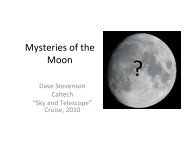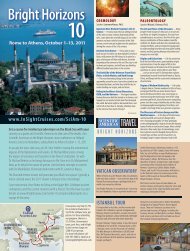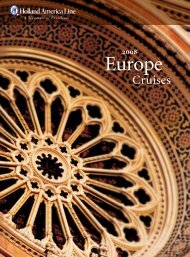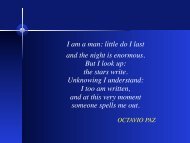Croatian cultural heritage - Business - Hrvatska turistiÄka zajednica
Croatian cultural heritage - Business - Hrvatska turistiÄka zajednica
Croatian cultural heritage - Business - Hrvatska turistiÄka zajednica
You also want an ePaper? Increase the reach of your titles
YUMPU automatically turns print PDFs into web optimized ePapers that Google loves.
THE CROATIAN MAGICAL<br />
CULTURAL HERITAGE<br />
<strong>Croatian</strong> <strong>cultural</strong> <strong>heritage</strong> is not as well known as the <strong>cultural</strong> <strong>heritage</strong> of some large and powerful countries. It<br />
has no magnificent monuments, such as for example the Egyptian pyramids, the Pompeii in Italy or the castle<br />
Neuschwanstein in the German Alps. Croatia was not the centre of the great empires of the past and will surprise<br />
many visitors in that, in proportion to its surface, there are more sites of <strong>cultural</strong> <strong>heritage</strong> under UNESCO<br />
protection in Croatia than for example in France or Germany. Croatia has many other valuable <strong>cultural</strong> monuments<br />
which would also be able to find a place on UNESCO's list.<br />
Proportional to its size, what is<br />
particularly significant about<br />
Croatia is its wealth of intangible<br />
<strong>heritage</strong>; with as many as nine<br />
<strong>cultural</strong> phenomena inscribed<br />
on the Representative List of the<br />
Intangible Cultural Heritage of<br />
Humanity, Croatia is among the<br />
countries with the most protected<br />
intangible assets in the world.<br />
Inscribed on the UNESCO list<br />
are the Festivity of St. Blaise in<br />
Dubrovnik, lace-making in Lepoglava<br />
and on the islands of Hvar and Pag, the carnival group of bell ringers from the Kastav region, near Rijeka,<br />
a unique religious event – the Hvar Procession “Za Križen” (‘following the Cross’), two-part singing and playing<br />
of the Istrian scale, the spring procession of the women’s folklore group Ljelja in Slavonia, the production of<br />
traditional wooden toys from the <strong>Croatian</strong> Zagorje region, the Sinjska alka – a knights’ tournament in Sinj and<br />
the gingerbread craft from northern Croatia. Ojkanje singing features on the List of Intangible Cultural Heritage<br />
in Need of Urgent Safeguarding.<br />
One reason for this wealth of tangible and intangible <strong>cultural</strong> <strong>heritage</strong> is the outstanding position of Croatia on<br />
important traffic routes and at the crossroads of great civilizations, each wanting to leave their mark. There-<br />
2
















